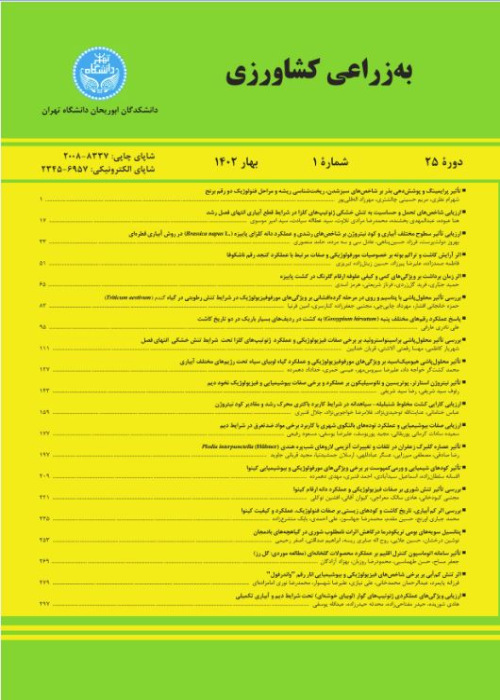Field Evaluation of Nitrogen and Boron Effects on Quantitative and Qualitative Parameters of Cotton in Calcareous Soil
In a field experiment, the effects from application of nitrogen and boron on quantitative and qualitative characteristics of Varamin cotton variety have been studied at Tehran Agricultural and Natural Resources Research Center in 2016. The experiment has been carried out, using a randomized complete block design with factorial arrangement with three replications, with the main factor being nitrogen at four levels (0, 100, 200, and 300 kg ha-1) and the sub-factor, involving boron at three levels (no leaf spray, one leaf spray, and two leaf spray). The effects of nitrogen and boron and the interaction of nitrogen and boron on the quantitative traits of cotton, namely the mean number of bolls per plant, average boll weight, fiber yield, and fiber gin out, with the qualitative traits including fiber length and strength. Highest seedcotton yield (5233 kg ha-1), fiber yield (2080 kg ha-1), fiber percentage (40%), fiber length (31.3 mm), and fiber strength (29.7 g / textile) belong to 200 kg N per hectare and twice spraying of boron. There is a correlation between the qualitative properties of the fibers and nitrogen, whose regression relation follows the quadratic equation. Results show that in soils with less than 0.5 mg / kg boron and less than 0.81% organic carbon storage, nitrogen and boron application significantly increases seedcotton and fiber yield and the fiber quality is also improved. Therefore, in such soils, it is recommended to utilize 200 kg N with two times of foliar boron application from boric acid source with a concentration of five per thousand at flowering stage for two weeks thereafter.
boron , Cotton , fiber , Seedcotton yield , nitrogen
- حق عضویت دریافتی صرف حمایت از نشریات عضو و نگهداری، تکمیل و توسعه مگیران میشود.
- پرداخت حق اشتراک و دانلود مقالات اجازه بازنشر آن در سایر رسانههای چاپی و دیجیتال را به کاربر نمیدهد.



